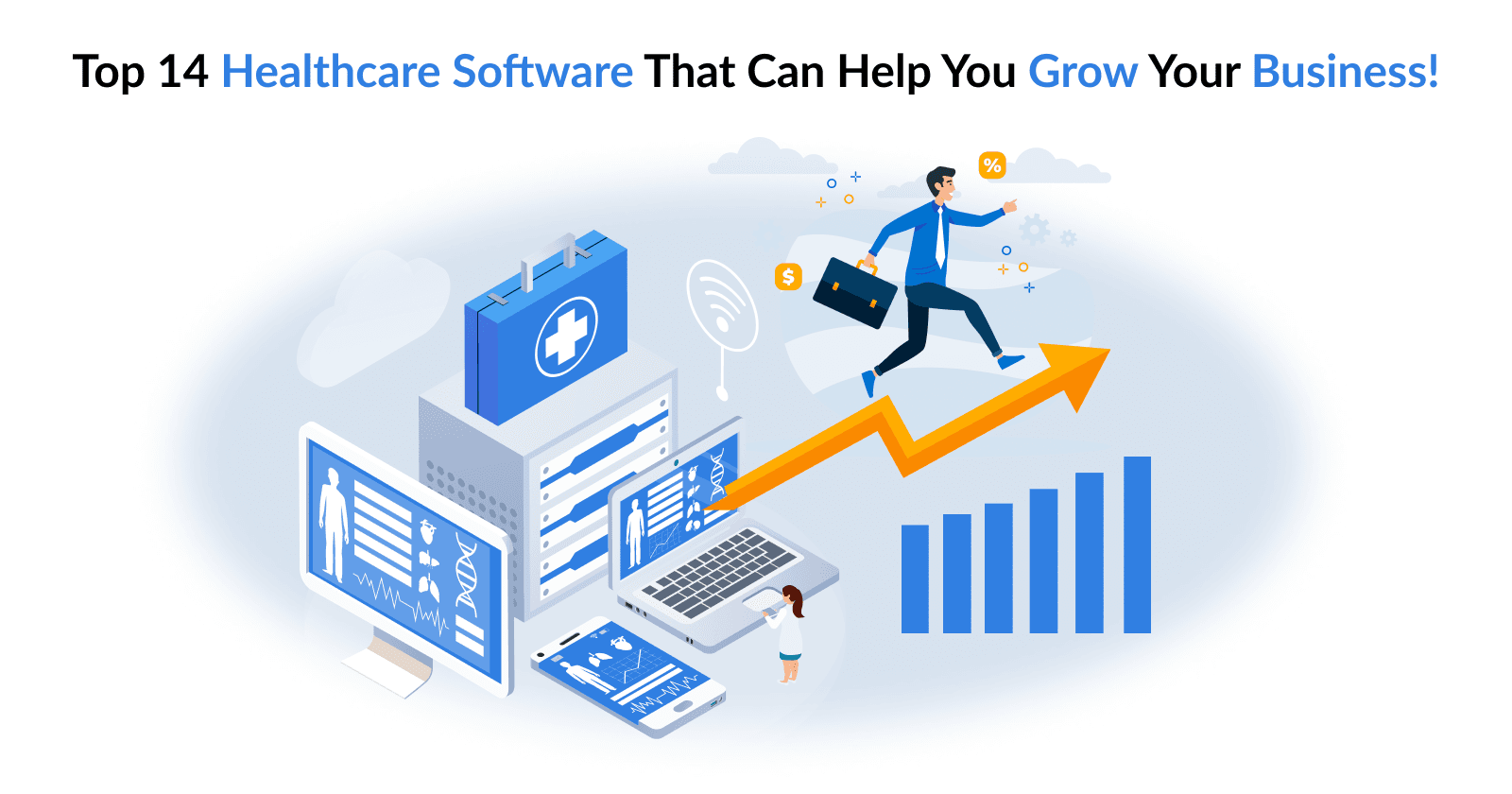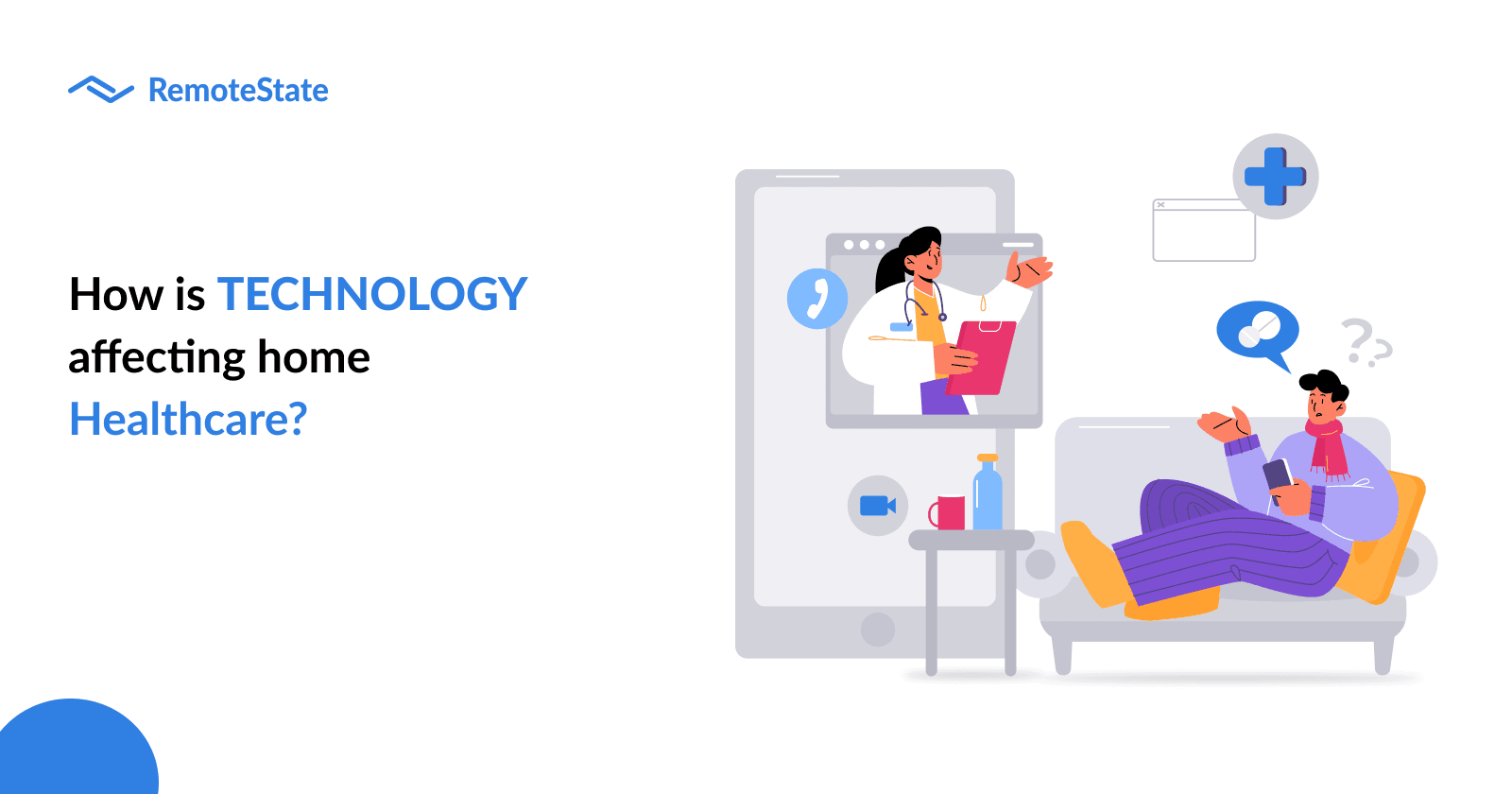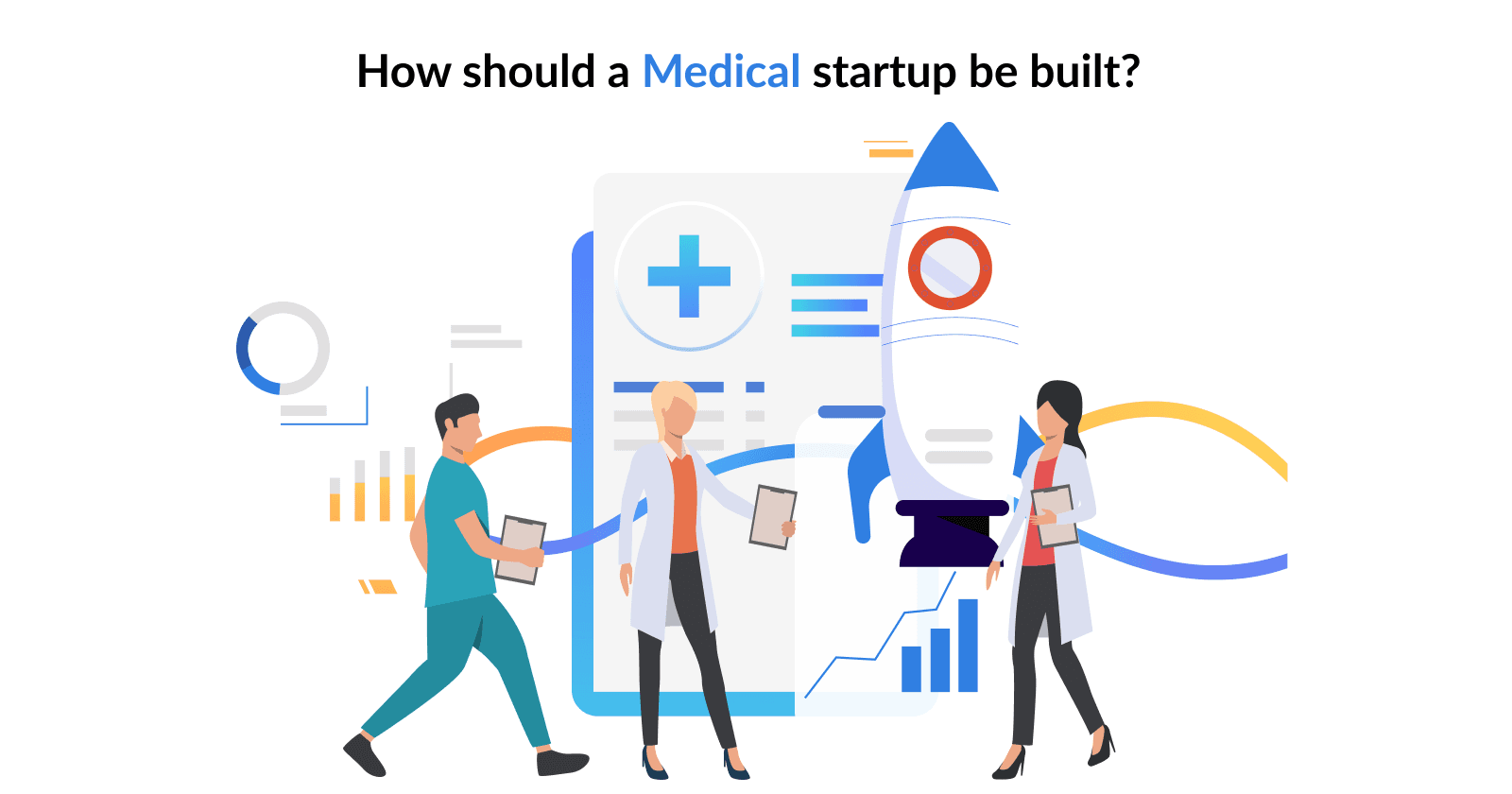Introduction
The healthcare industry is undergoing a digital transformation, and the Internet of Things (IoT) is playing a significant role in this change.
The healthcare industry is undergoing a digital transformation, and the Internet of Things (IoT) is playing a significant role in this change. Connected devices, such as wearables and medical equipment, are collecting and exchanging data over the internet to improve patient outcomes, reduce healthcare costs, and provide real-time data for medical research.
In this blog, we will explore the pros and cons of IoT in healthcare, the challenges faced, and the future of this technology in the healthcare industry.
Pros of IoT in Healthcare
Improved Patient Outcomes
One of the significant benefits of IoT in healthcare is improved patient outcomes. Connected devices enable remote monitoring and data collection, which can help healthcare providers identify and address potential health issues before they become critical.
For example, wearable devices can monitor vital signs, such as heart rate and blood pressure, and alert healthcare providers if there is a significant change, allowing for timely intervention and treatment.
Increased Efficiency
IoT devices enable real-time data analysis, which can help healthcare providers make faster and more accurate diagnoses and treatment decisions. This is particularly useful in emergencies, where seconds can mean the difference between life and death.
Connected devices can also streamline administrative tasks, such as scheduling appointments and managing patient records, freeing up healthcare providers' time to focus on patient care.
Reduced Healthcare Costs
By enabling preventative care and early intervention, IoT devices can help reduce healthcare costs in the long run. For example, wearable devices that monitor blood glucose levels can alert patients and healthcare providers to potential complications before they become severe, reducing the need for hospitalization and expensive treatments.
Connected devices can also improve medication adherence, reducing the likelihood of complications and readmissions.
Increased Patient Engagement and Empowerment
IoT devices can also increase patient engagement and empowerment by providing patients with real-time data about their health. This can motivate patients to take an active role in their health and make positive lifestyle changes.
For example, wearable devices that track physical activity and sleep patterns can motivate patients to exercise more and get better quality sleep.
Real-Time Data for Medical Research
IoT devices can provide healthcare researchers with real-time data that can be used to develop new treatments and therapies.
By analyzing data from a large pool of patients, researchers can identify patterns and correlations that may not be apparent in smaller data sets. This can lead to new insights into disease prevention and treatment.
Remote Patient Monitoring
Connected devices can enable remote patient monitoring, which is particularly useful for patients with chronic conditions.
For example, patients with diabetes can use connected devices to monitor their blood glucose levels and receive real-time feedback and recommendations from healthcare providers.
Improved Access to Healthcare
IoT devices can help improve access to healthcare, particularly in rural or underserved areas. Telemedicine, which uses connected devices to enable remote consultations and treatment, can help patients who are unable to visit a healthcare provider in person due to distance or mobility issues.
Customized Treatment Plans
IoT devices can help healthcare providers develop customized treatment plans for individual patients based on their unique health data.
For example, a patient with hypertension may receive a treatment plan that is tailored to their specific blood pressure readings, activity levels, and other health metrics.
Improved Hospital Efficiency
IoT devices can also improve hospital efficiency by enabling real-time tracking of medical equipment and supplies. This can help reduce waste and prevent shortages, ensuring that healthcare providers have the resources they need to provide optimal care to patients.
Improved Collaboration
Connected devices can enable healthcare providers to collaborate more effectively, particularly in interdisciplinary settings.
For example, a patient with multiple chronic conditions may receive care from a team of healthcare providers, including physicians
Cons of IoT in Healthcare
While IoT has the potential to revolutionize healthcare, there are also some downsides to consider. Here are some of the cons of IoT in healthcare:
Security Risks
Connected devices in healthcare are susceptible to cybersecurity threats, such as data breaches and hacking. This can put patient data at risk, compromising privacy and security.
Reliability Issues
Connected devices are only as reliable as their data sources. If data is inaccurate or incomplete, it can lead to incorrect diagnoses and treatment decisions.
Regulatory Challenges
IoT in healthcare is subject to regulations, such as HIPAA and GDPR, which can create compliance challenges for healthcare providers and device manufacturers.
Cost
The cost of implementing and maintaining IoT devices in healthcare can be high, particularly for smaller healthcare providers or those in low-income areas.
Data Overload
Connected devices generate large amounts of data, which can be overwhelming for healthcare providers to manage and analyze.
Interoperability
IoT devices may not be interoperable with existing healthcare systems, making it difficult to integrate data into electronic health records (EHRs) and other healthcare applications.
Training and Education
Healthcare providers may require additional training and education to effectively use IoT devices and interpret the data generated.
Ethical Concerns
IoT devices raise ethical concerns, such as the potential for data misuse and patient surveillance.
Maintenance and Upgrades
IoT devices require ongoing maintenance and upgrades, which can be costly and time-consuming.
Data Ownership
The ownership and control of patient data generated by IoT devices can be unclear, creating potential conflicts between patients, healthcare providers, and device manufacturers.
Challenges of IoT in Healthcare
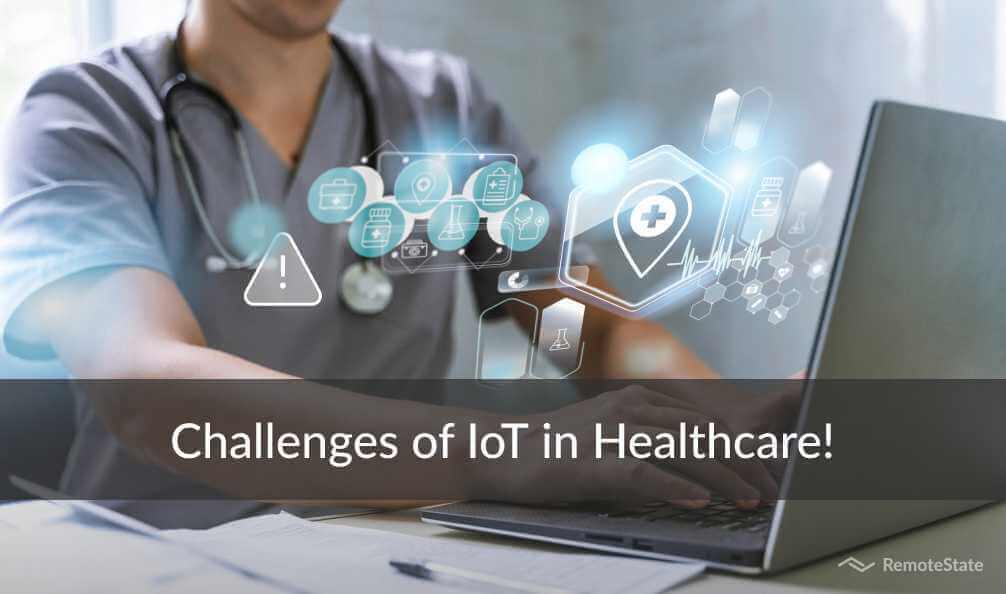
Implementing IoT in healthcare is not without its challenges. Here are some of the main challenges healthcare providers face when adopting IoT technology:
Data Security
As mentioned earlier, cybersecurity threats are a significant concern in healthcare IoT. Healthcare providers must ensure that their connected devices are secure and protected from data breaches.
Data Management
IoT devices generate large amounts of data, which can be difficult to manage and analyze. Healthcare providers must have the infrastructure in place to store and analyze this data effectively.
Integration with Existing Systems
IoT devices must be able to integrate with existing healthcare systems, such as EHRs, to ensure that patient data is accessible and accurate.
Interoperability
As mentioned earlier, interoperability is a significant challenge in healthcare IoT. Devices must be able to communicate with each other and with existing healthcare systems to ensure that data is accessible and accurate.
Privacy Concerns
Connected devices generate a lot of data about patients, raising privacy concerns. Healthcare providers must ensure that patient data is collected and used in a way that is compliant with privacy regulations.
Infrastructure
Implementing IoT devices requires infrastructure, such as reliable internet connectivity, that may not be available in all areas.
User Adoption
IoT devices require user adoption from healthcare providers and patients. Healthcare providers must be willing to use and interpret the data generated by these devices, while patients must be willing to use the devices and share their data.
Cost
As mentioned earlier, the cost is a significant challenge in healthcare IoT. Healthcare providers must be able to justify the cost of implementing and maintaining these devices.
Regulation
IoT in healthcare is subject to regulations, such as HIPAA and GDPR, which can create compliance challenges for healthcare providers and device manufacturers.
Data Ownership
As mentioned earlier, the ownership and control of patient data generated by IoT devices can be unclear, creating potential conflicts between patients, healthcare providers, and device manufacturers.
Future of IoT in Healthcare
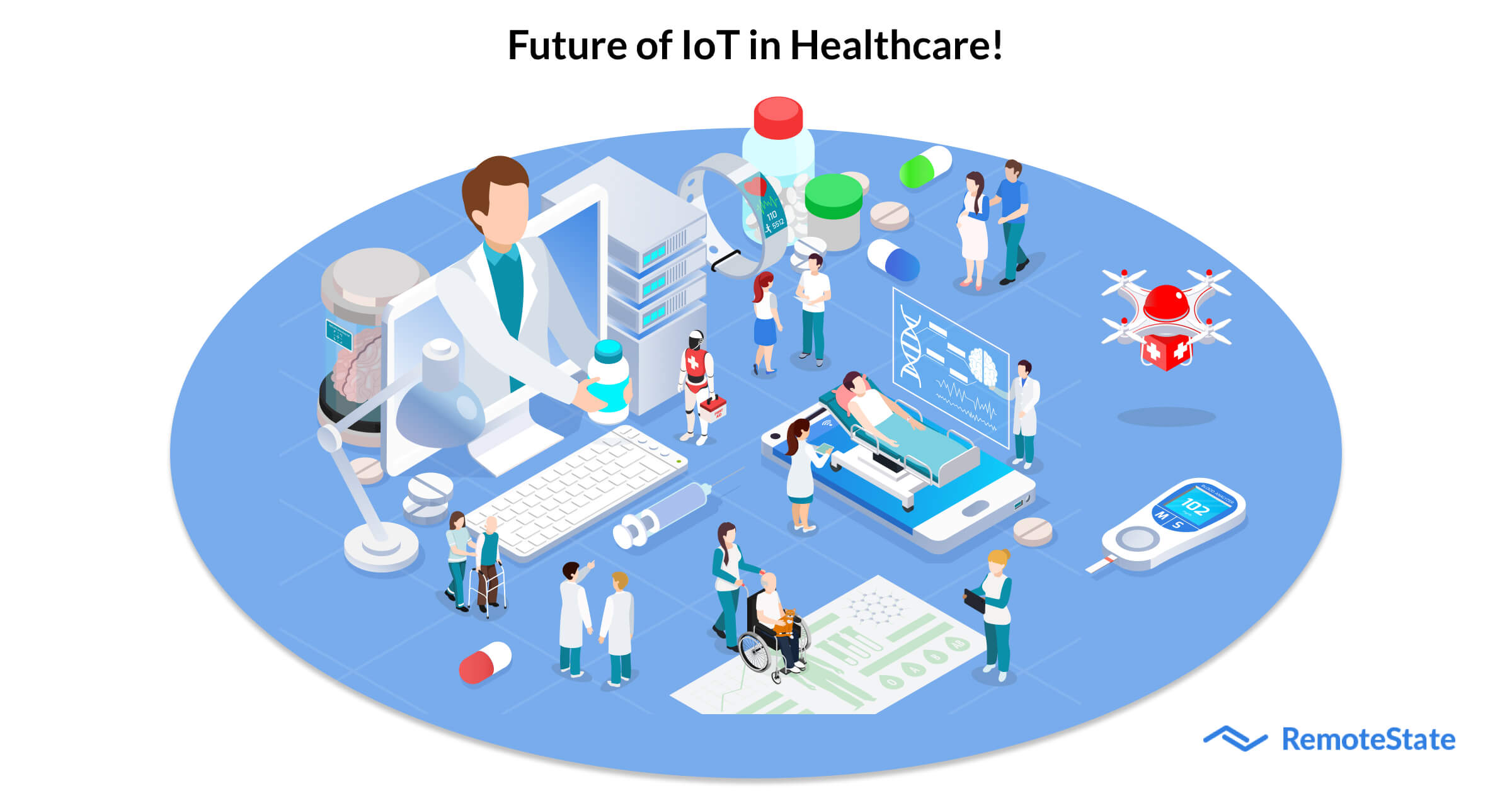
The future of IoT in healthcare looks bright. Here are some of the ways that IoT is likely to impact healthcare in the years to come:
Remote Patient Monitoring
IoT devices will enable healthcare providers to remotely monitor patients' vital signs and other health metrics, reducing the need for in-person visits and improving patient outcomes.
Improved Patient Engagement
IoT devices can help patients take a more active role in managing their health by providing them with real-time health data and personalized health recommendations.
Predictive Analytics
IoT devices can generate vast amounts of data about patients, which can be used to develop predictive analytics models that help healthcare providers identify patients who are at risk of developing certain conditions and intervene before the condition worsens.
Wearable Technology
Wearable technology, such as smartwatches and fitness trackers, is already widely used for personal health tracking. These devices will become even more sophisticated, allowing patients to monitor a wide range of health metrics.
Telemedicine
IoT devices will enable healthcare providers to offer telemedicine services, such as remote consultations and diagnoses, to patients in remote or low-income areas.
Personalized Medicine
IoT devices can provide healthcare providers with real-time data about patients, allowing for more personalized and targeted treatment plans.
Efficient Healthcare Delivery
IoT devices can improve the efficiency of healthcare delivery by reducing the need for in-person visits, streamlining administrative tasks, and optimizing care delivery.
Improved Clinical Trials
IoT devices can be used to collect data in clinical trials, making it easier to monitor patient outcomes and track the efficacy of treatments.
Public Health Surveillance
IoT devices can be used to monitor public health trends, such as outbreaks of infectious diseases, and to identify potential health risks in real time.
Improved Healthcare Access
IoT devices can help improve healthcare access for patients in remote or low-income areas by providing them with remote monitoring and telemedicine services.
Conclusion
IoT has the potential to transform healthcare by improving patient outcomes, reducing healthcare costs, and improving the efficiency of healthcare delivery. However, the implementation of IoT in healthcare is not without its challenges, such as data security, interoperability, and cost.
Healthcare providers must carefully consider these challenges and work to overcome them to realize the full potential of IoT in healthcare.
How Remotestate can assist you on your journey!
As a software development firm, Remotestate can assist healthcare providers and organizations implement IoT solutions to improve patient outcomes, reduce healthcare costs, and optimize healthcare delivery. Our team of experienced developers can work closely with healthcare providers to design and develop custom IoT solutions tailored to their specific needs.
We can provide end-to-end IoT development services, from ideation to deployment and maintenance, ensuring that our clients have a comprehensive solution that meets their requirements. Our developers are well-versed in the latest IoT technologies and can help healthcare providers navigate the complexities of IoT implementation.
In summary, Remotestate can be a valuable partner for healthcare providers looking to implement IoT solutions. Our IoT development expertise and data security commitment can help healthcare organizations leverage the power of connected devices to improve patient outcomes, reduce healthcare costs, and optimize healthcare delivery.
FAQs
What is IoT in healthcare?
IoT in healthcare refers to the use of connected devices, such as wearables and remote monitoring devices, to collect and transmit health data.
What are the benefits of IoT in healthcare?
IoT in healthcare has the potential to improve patient outcomes, reduce healthcare costs, and improve the efficiency of healthcare delivery.
What are the challenges of IoT in healthcare?
The challenges of IoT in healthcare include data security, interoperability, privacy concerns, and cost.
What is the future of IoT in healthcare?
The future of IoT in healthcare looks bright, with potential applications including remote patient monitoring, predictive analytics, wearable technology, telemedicine, and personalized medicine.
Publication Date
2023-02-27
Category
Healthcare
Author Name
Rahul Agrawal
